Fermenting Beer with Lallemand LalBrew Windsor Yeast
Published: October 11, 2025 at 8:19:00 AM UTC
This article serves as a practical guide for fermenting beer with Lallemand LalBrew Windsor Yeast. It introduces LalBrew Windsor, a dry Saccharomyces cerevisiae top-fermenting ale yeast from Lallemand Brewing. It's designed for traditional English ales. Brewers will find detailed guidance on using Windsor ale yeast in various styles, including pale ales, bitters, brown ales, porters, stouts, and milds.
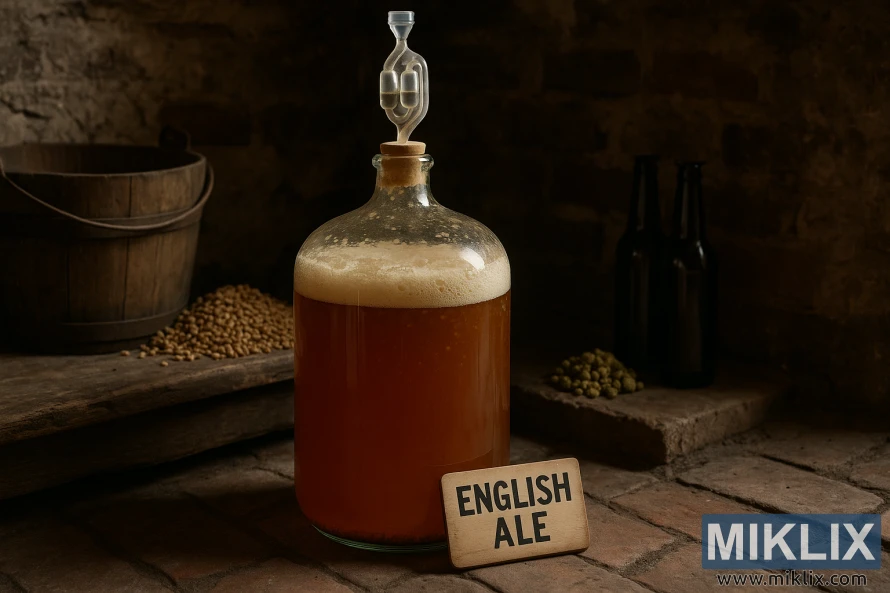
This guide is aimed at homebrewers and small-scale professional brewers in the United States. It offers practical tips on pitching rates, rehydration, mash and recipe adjustments, handling, troubleshooting, storage, and where to buy Lallemand LalBrew Windsor Yeast.
Key Takeaways
- Lallemand LalBrew Windsor Yeast is a dry, top-fermenting English-style ale yeast suited to traditional ales and darker styles.
- Expect a fruity estery character, medium attenuation, and low flocculation that preserve body.
- Optimal fermentation range is 15–22°C (59–72°F); alcohol tolerance approaches 12% ABV.
- The article includes practical advice on pitching, rehydration, mash tweaks, and troubleshooting.
- Content targets U.S. homebrewers and small professional brewers seeking reliable Windsor ale yeast performance.
Why Choose Lallemand LalBrew Windsor Yeast for English-Style Ales
LalBrew Windsor is a true English strain, chosen for its balanced fruity aroma and fresh yeast character. It's preferred for beers that need a fuller body and a slightly sweet finish. This is in contrast to the clean, neutral profiles of many American strains.
This strain is ideal for a variety of classic styles, including milds, bitters, Irish reds, English brown ales, porters, sweet stouts, and pale ales. Home and professional brewers often select Windsor for pale ales. It preserves malt flavor and enhances fruit esters without overpowering hop character.
Windsor's low flocculation and medium attenuation ensure beers retain body and residual sweetness. This makes it a top choice for bitters, where mouthfeel and malt balance are crucial. The yeast contributes a pleasing roundness, enhancing biscuit and caramel malts.
For darker beers, Windsor can soften harsh roast notes, bringing out dried-fruit and toffee nuances. In a homebrew example, a brewer used Windsor instead of Fermentis US-05 to reduce roasted coffee bite. This resulted in a fuller, raisin-forward finish that met the recipe's goals.
Choose Windsor for classic English character: modest esters, gentle yeast tang, and malty depth. It's perfect for brews that rely on malt complexity and a warm, rounded profile, rather than a highly attenuated, crisp finish.
Strain Characteristics and Technical Specifications
Windsor is classified as Saccharomyces cerevisiae, a top-fermenting ale yeast. It's preferred for English-style beers. This strain has a fruity, estery profile and medium attenuation, fitting traditional ale recipes well.
Typical Windsor technical data from Lallemand includes percent solids at 93–97% and viability at ≥ 5 x 10^9 CFU per gram. Microbiological limits are strict: wild yeast under 1 per 10^6 yeast cells, bacteria under 1 per 10^6 yeast cells, and diastaticus undetectable.
Under Lallemand standard conditions at 20°C (68°F), Lallemand Windsor analysis records vigorous fermentation. It can finish in about three days. Expect medium attenuation with low flocculation and clear English-style ester character.
- Reported attenuation: Lallemand lists “medium”; independent Beer-Analytics profiles record around 70%.
- Alcohol tolerance: roughly up to 12% ABV under healthy conditions.
- Pitching recommendation: 50–100 g per hL to reach about 2.5–5 million cells/mL, depending on target pitch rate.
Saccharomyces cerevisiae dry yeast specs for Windsor make it versatile for a range of ales. This includes bitters, pale ales, and milds. Its predictable profile helps brewers dial in body and residual sweetness.
For labs and pilot brews, Lallemand Windsor analysis and Windsor technical data provide the metrics needed. These include cell counts, hydration needs, and expected fermentation timelines. These figures support consistent batch-to-batch performance.
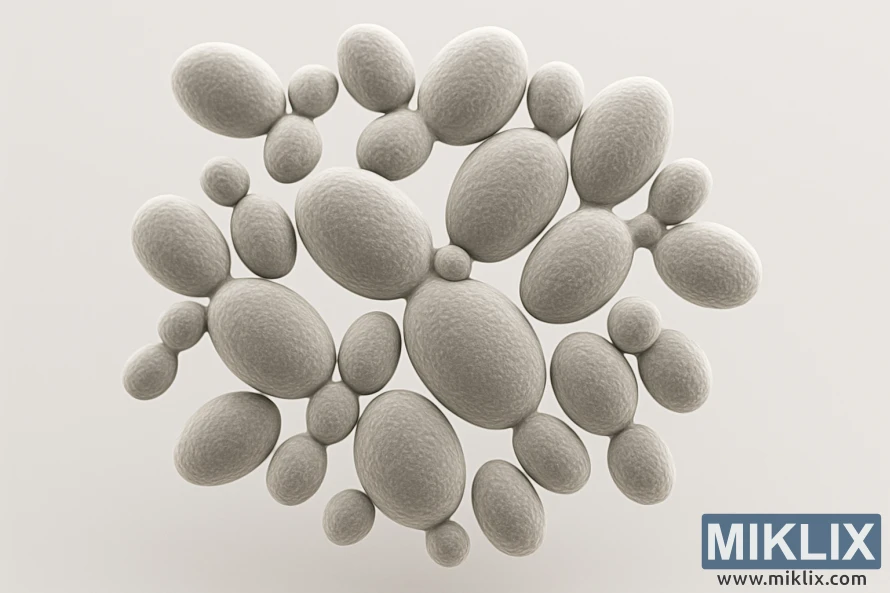
Optimal Fermentation Temperature Range and Effects
Lallemand LalBrew Windsor thrives in a moderate temperature range. The recommended temperature is 15–22°C (59–72°F). This range helps maintain the English-style character while ensuring consistent attenuation.
Keeping the temperature closer to the lower end results in a cleaner taste with less esters. As the temperature increases, the beer develops fruitier esters and a more pronounced English character. Brewers use this to fine-tune the aroma and mouthfeel.
Temperature control is crucial. The fermentation temperature affects Windsor in every stage: lag phase, attenuation, and flavor development. Small changes in temperature can significantly impact the final beer. The interaction between pitch rate, wort nutrition, and temperature is key.
A commercial brewer's example shows Windsor can tolerate slightly warmer temperatures for specific effects. In a porter trial, the fermentation started at 20–21°C and rose to 23°C towards the end. This was done to speed up fermentation and increase ethanol production. Use this method with caution and sparingly.
- Avoid sudden temperature shocks during rehydration or transfer.
- Do not expose yeast to swings greater than 10°C; rapid changes can cause mutant strains and off-flavors.
- Monitor ambient and wort temperature, not just the fermenter headspace.
When aiming for a specific style, check how the fermentation temperature affects Windsor. Consistent control within the 15-22°C range ensures repeatable results and predictable ester levels for traditional English ales.
Attenuation, Body, and Residual Sweetness Expectations
Lallemand LalBrew Windsor exhibits medium attenuation, as most guides suggest. You can anticipate around 65–75% apparent attenuation in many batches. This means most simple sugars are fermented, leaving behind longer-chain dextrins to enhance mouthfeel.
The attenuation level of Windsor contributes to its notable body, setting it apart from highly attenuative American ale strains like US-05. Brewers often note a fuller palate and softer finish with Windsor. This is beneficial for darker styles, such as porter or brown ale, which can reach 9–10% ABV and still feel rounded.
The body of Windsor is partly due to its maltotriose utilization. This strain does not effectively ferment maltotriose, a trisaccharide making up 10–15% of wort sugars. The leftover maltotriose increases residual extract, leading to noticeable sweetness.
To enhance residual sweetness in Windsor, adjust your mash schedule. Increase mash rests to 154–156°F to encourage dextrin formation and a syrupy mouthfeel. This approach leverages the yeast's natural inclination to retain body and sweetness.
For a drier finish, lower the mash temperature and favor beta-amylase activity. This strategy promotes the production of fermentable maltose, which compatible strains can consume. It results in less leftover extract compared to a Windsor-fermented beer.
- Expect medium attenuation in standard ales.
- Use higher mash temps to increase body and residual sweetness.
- Choose lower mash temps for a drier profile if you want less residual sweetness.
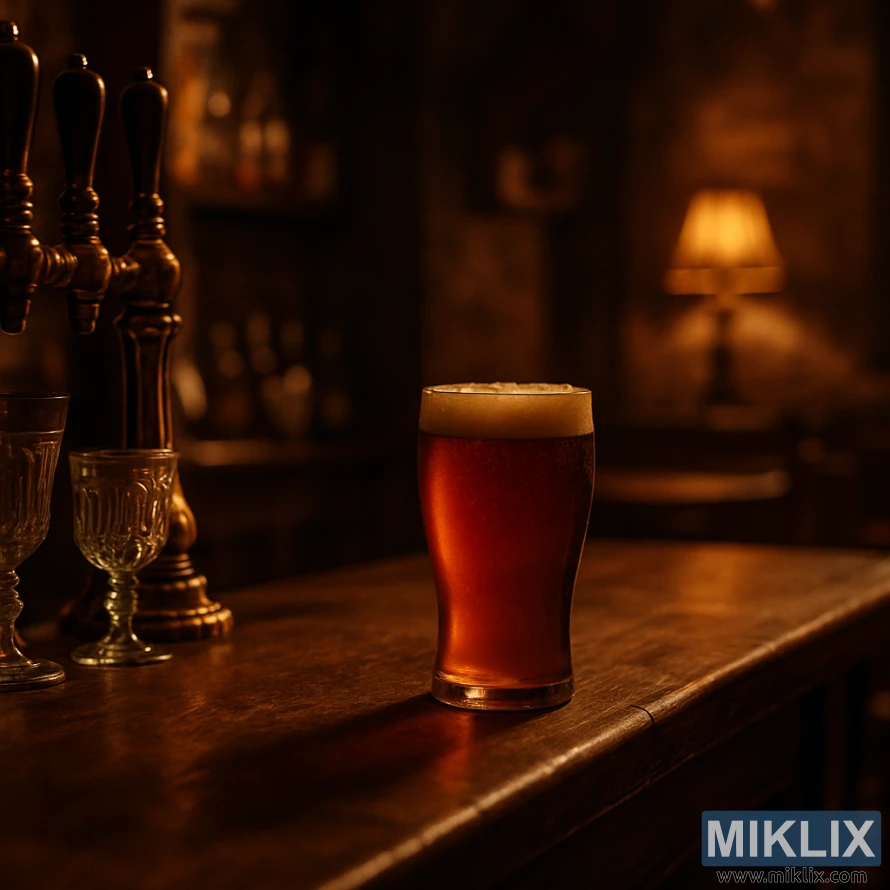
Pitching Rates, Rehydration, and Yeast Handling Best Practices
For optimal results, target a Windsor pitching rate of 50–100 g per hL of wort. This will yield approximately 2.5–5 million cells/mL. For typical English ales, aim for the lower end of this range. For high-gravity brews, heavy adjuncts, or acidic worts, the higher end is recommended.
In cases of more stressful fermentations, consider increasing the pitch weight and adding nutrients. Utilizing a rehydration nutrient like Go-Ferm Protect Evolution can significantly enhance cell viability during the transition from dry to liquid yeast.
To effectively rehydrate LalBrew Windsor, sprinkle the dry yeast over 10 times its weight in sterile water at 30–35°C (86–95°F). Gently stir, then rest for 15 minutes. Stir again and wait five minutes before acclimation.
Post-rehydration, introduce small wort aliquots in 5-minute intervals to avoid shocking the cells. Ensure any temperature drop between yeast and wort does not exceed 10°C. Once acclimated, pitch into cooled wort without delay.
- Dry-pitching is often successful for standard ales, but rehydrate LalBrew Windsor for high-gravity or challenging ferments.
- Consider nutrient additions and oxygenation for high gravity to support healthy fermentation.
Proper yeast handling by Lallemand begins with storage. Store vacuum-sealed packs in a cool, dry place below 4°C (39°F). Do not use packs that have lost their vacuum.
If a pack is opened, reseal and use within three days unless you re-vacuum it promptly. Avoid temperature swings and moisture exposure during transport and storage.
For difficult beers, increase the pitch rate, ensure adequate oxygen, and use rehydration nutrients. These measures protect viability and minimize lag time. By applying Windsor pitching rate and yeast handling Lallemand best practices, you can achieve better results.
Fermentation Performance and Timeline with Windsor
Under Lallemand standard wort conditions at 20°C, expect a vigorous fermentation Windsor strain to finish in roughly three days. The actual Windsor fermentation timeline can vary based on several factors. These include pitching rate, wort gravity, temperature, and nutrient levels.
Lag phase length and total fermentation time depend on yeast handling and pitch size. A healthy, properly rehydrated pitch shortens lag and improves Windsor fermentation speed. Dry-pitching at low rates can extend the timeline.
- High-gravity worts often slow activity and call for higher pitching rates.
- Nutrients and oxygen at pitch reduce stalled fermentations.
- Proper sanitation and temperature control protect desired attenuation and flavor.
For brewers seeking more attenuation while keeping a bit of body, raise temperature late in fermentation. Moving from 20–21°C up to about 23°C can nudge the yeast to finish more sugars without stripping malt character.
When re-pitching Windsor, follow standard SOPs for yeast handling. Ensure good aeration of the wort if using re-pitched dry yeast. This maintains yeast health and consistent Windsor fermentation speed in subsequent generations.
Flavor and Aroma Contributions from Windsor Yeast
LalBrew Windsor introduces a classic English character, perfect for malt-focused recipes. Its flavor profile is marked by fresh, fruity esters and a hint of bready yeast. Notable notes include red apple, green apple, and light banana.
The fruity esters Windsor produces are influenced by fermentation temperature and pitch rate. Warmer temperatures and lower pitch rates enhance ester expression. On the other hand, cooler, well-pitched ferments result in a more restrained profile with subtle phenolics and clove-like spice.
In darker beers, Windsor's aroma contributions soften harsh roasted edges. This yeast's estery background rounds out porters and brown ales, making them taste sweeter on the finish. The mouthfeel is often fuller than with very clean American ale strains.
When balancing recipes, Windsor enhances malt complexity without overwhelming it with spice. Adjust mash profiles and hopping to keep the esters in harmony with caramel, toffee, or chocolate malts. Many commercial English ales rely on Windsor for its reliable fruity backbone and moderate phenolic lift.
- Common notes: red apple, tropical and green apple, banana, light clove.
- Control tips: lower temp and higher pitch to reduce esters; raise temp or underpitch to amplify them.
- Best fits: malt-forward bitters, English ales, session porters where a softer roast is desired.
Windsor's flavor and aroma contributions make it versatile for brewers seeking personality without overpowering spice. Use small-scale tests to fine-tune the fruity esters Windsor for your desired beer style.
Using Windsor for High-Gravity and Specialty Beers
LalBrew Windsor is adept at handling high-strength English ales. It can tolerate alcohol up to about 12% ABV. This makes it an excellent choice for porters and stouts, ensuring the retention of malt character and gentle attenuation.
For high-gravity ferments, increase the pitching rate. Lallemand suggests rates above the usual 50–100 g/hL for high adjunct or acidic worts. This is to prevent sluggish behavior during Windsor high-gravity fermentation.
Rehydrating with a protective nutrient, such as Go-Ferm Protect Evolution, supports cell viability. This step enhances performance in LalBrew Windsor high ABV projects. It also reduces the risk of stalled activity.
Oxygenation and targeted nutrient additions are crucial for achieving higher alcohol levels. Brief oxygenation at pitch and staggered nutrient dosing keep yeast healthy. This minimizes off-flavors in Windsor for porters and stouts.
- Example practice: a 1.070 OG porter using Windsor retained body and a pleasant sweetness while reaching about 9–10% ABV when adjuncts like raisins and lactose were added.
- Monitor gravity daily early in fermentation. Watch for signs of stress so you can add nutrients or adjust temperature if needed.
- Consider a slightly warmer finish to help yeast clean up byproducts without stripping malt character.
By following these steps, Windsor high-gravity fermentation becomes predictable and repeatable. Brewers aiming for LalBrew Windsor high ABV results will find success with careful pitching, rehydration, oxygenation, and nutrient strategy.
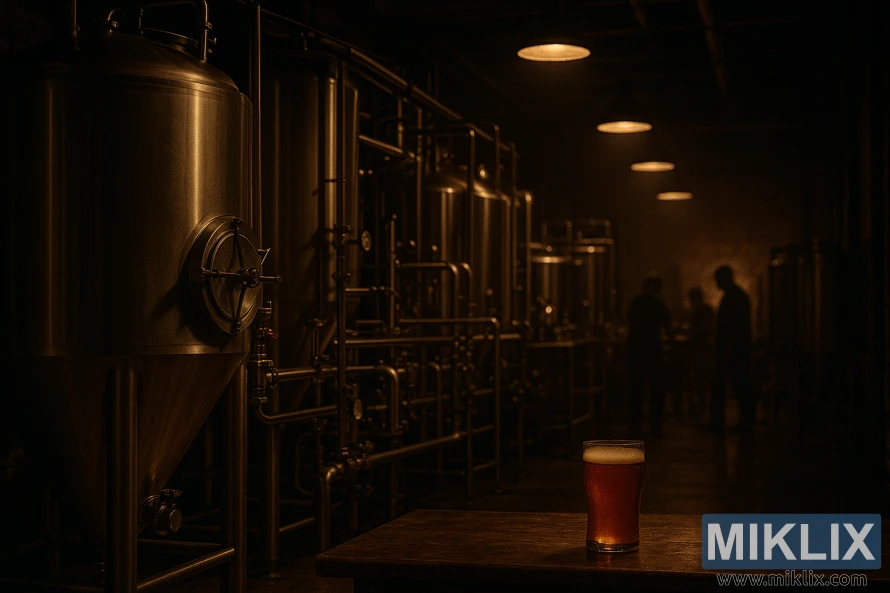
Practical Recipe Adjustments and Mash Considerations
Windsor leaves more maltotriose behind, so adjust the mash temperature to achieve the desired body and sweetness. For a fuller mouthfeel, aim for 66–68°C (151–154°F). For a drier finish, drop to the low 60s.
When brewing English-style ales, follow a clear mash schedule for full body. A single infusion at 66–68°C ensures consistent dextrin levels. For more control, consider a short protein rest followed by a high saccharification rest to boost extract.
For Windsor-friendly recipe tweaks, increase perceived sweetness and complexity. Add small amounts of lactose, crystal malts, or chocolate malt for color and midpalate weight. Raisins or dried fruit in conditioning can add depth without pushing attenuation.
For a cleaner, less sweet result, choose lower mash temps and ferment toward the cool end of Windsor’s range. Keeping fermentation at 15–17°C promotes a tighter ester profile and reduces residual sweetness.
High original gravity recipes require special attention. Add yeast nutrient, oxygenate well at pitching, and consider step-feeding simple sugars if attenuation stalls. Re-pitching dry yeast requires careful aeration to support biomass and healthy fermentation.
- Balance hops to suit malt focus: moderate English hops for subtle bitterness.
- Limit highly fermentable adjuncts if you want more body.
- Adjust water chemistry to accentuate maltiness when using higher mash temps.
These practical adjustments and the right mash schedule for full body help you match Windsor’s character to your recipe goals. Small recipe tweaks Windsor can transform a base beer into a richer, more authentic English-style ale.
Packaging, Conditioning, and Flocculation Behavior
Windsor yeast exhibits low flocculation, meaning it stays suspended longer than many English strains. This trait contributes to a fuller mouthfeel and a slight haze. These characteristics are perfect for traditional cask and bottle-conditioned ales.
Conditioning with Windsor requires extra time. Allow a longer maturation period for yeast cleanup and diacetyl reduction. Cold conditioning or a brief lagering period helps settle the yeast before packaging.
When packaging Windsor beers, expect more yeast in bottles or kegs. Rack carefully off trub and avoid over-transferring sediment. For forced carbonation, pause after cold crashing to let the bulk of yeast settle.
- For clearer beer, use fining agents like Irish moss during the boil or gelatin in conditioning tanks.
- Cold crashing accelerates settling and reduces suspended yeast prior to packaging Windsor beers.
- Filtration or centrifugation provides the cleanest result when clarity is essential.
Leave yeast in suspension for a full body and traditional English haze. Many cask ale drinkers prefer a touch of cloudiness. This haze and mouthfeel are key benefits of Windsor flocculation.
When planning reuse, harvest yeast carefully and follow brewery SOPs for washing and storage. Re-pitching Windsor works well, but check viability and provide adequate aeration on the next pitch.
Small adjustments to conditioning with Windsor and attentive handling at packaging reduce off-flavors. This approach delivers the desired balance of clarity and character for English-style ales.
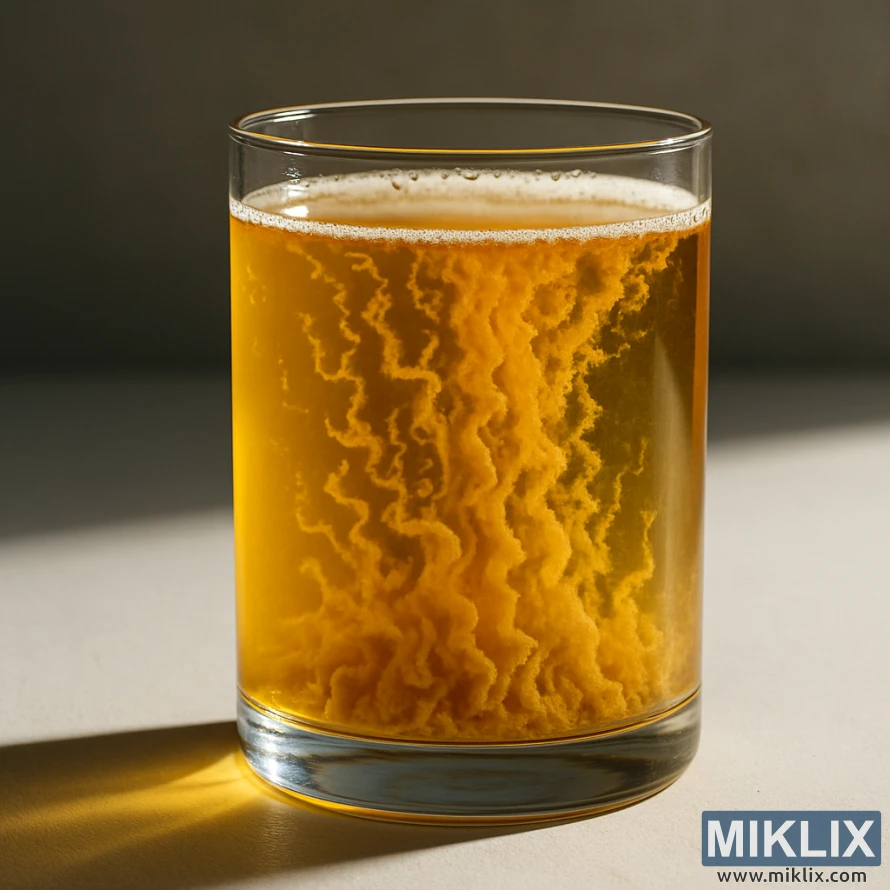
Troubleshooting Common Fermentation Issues with Windsor
Stalled or slow ferments are common with any strain. For Windsor stuck fermentation, check your pitching rate first. Low cell counts, weak starter activity, or poor rehydration will slow progress.
To fix Windsor fermentation problems, increase the pitch rate for the next batch. Adding a healthy starter mid-ferment when gravity is still high can also help. Ensure to oxygenate the wort before pitching and consider yeast nutrient for high-gravity worts. For very strong beers, use step-feeding to avoid stressing the culture.
Temperature shock and rehydration errors can cause long, incomplete fermentations and off flavors. Avoid sudden drops greater than 10°C during rehydration or after attemperation. Rehydrate Lallemand yeast per instructions and bring the pitch temperature close to the wort temperature.
Windsor off-flavors often come from fermenting at the top end of the range or above 22°C. Elevated temperatures increase esters and some phenolic notes. To control flavor, hold ferment within the recommended range or cool the fermenter a few degrees if fruitiness is excessive.
- If haze persists, expect slower clearing; Windsor has lower flocculation.
- Use a cold crash, fining agents, or filtration when clarity is essential.
- If beer is drier than expected, check mash schedule and enzymes before assuming yeast over-attenuation.
When you still need help, Lallemand Brewing offers technical support at brewing@lallemand.com. Their team can advise on how to fix Windsor fermentation problems specific to your recipe and process.
Where to Buy, Storage Advice, and Manufacturer Support
To acquire LalBrew Windsor in the United States, explore reputable homebrew stores, national online retailers, and authorized brewing distributors. Verify the pack sizes available; common options include retail 11 g sachets and 500 g professional packs. Retailers provide lot and expiry details, ensuring you select fresh stock.
Proper storage of Windsor is crucial for maintaining viability. Store vacuum-sealed packs in a dry environment, ideally below 4°C (39°F). Avoid using packs that have lost vacuum. If a pack is opened, reseal it and use within three days. For longer storage, re-vacuum seal the pack.
Shelf-life and performance are directly influenced by proper handling and the printed expiry date. Lallemand notes that some strains can tolerate brief temperature variations. Yet, viability drops significantly with improper storage. To achieve the best results, adhere strictly to the storage instructions provided on the pack and avoid frequent temperature changes.
Lallemand support offers a wealth of technical resources for brewers. Their documentation includes data sheets, pitching calculators, and detailed handling notes. For specific inquiries, reach out to brewing@lallemand.com for guidance on pitching rates, re-pitching, and wort aeration when using dry yeast.
- Check lot and expiry on the pack before you buy LalBrew Windsor.
- Store unopened packs under refrigeration for optimal Windsor storage.
- When re-pitching, provide fresh wort oxygen and follow standard SOPs.
For additional assistance, Lallemand support can provide guidance on application, viability concerns, and best practices for both professional and homebrew setups. Making informed purchasing decisions and adhering to proper storage practices will ensure the strain performs optimally in your ales.
Conclusion
The Lallemand LalBrew Windsor Yeast review highlights a dependable, traditional English ale strain. It offers fruity esters, medium attenuation near 70%, and a fuller mouthfeel. This is due to its limited use of maltotriose. Its low flocculation and predictable profile make it ideal for bitters, porters, brown ales, and sweeter stouts. These styles benefit from residual sweetness and body.
To achieve the best results with Windsor yeast, follow recommended pitching rates of around 50–100 g/hL. Rehydrate the yeast for tricky ferments. Keep fermentation temperatures between 15–22°C to manage ester levels. Adjust mash temperature and adjuncts to fine-tune the beer's body. Store packs below 4°C to maintain viability.
When using Windsor in high-gravity beers, increase the pitch rate and nutrient additions. Monitor temperature closely. Consider fining or cold-conditioning for a clearer beer. This summary shows U.S. homebrewers and craft brewers can replicate classic English character with Windsor yeast. For detailed technical questions, consult Lallemand Brewing resources or contact brewing@lallemand.com.
Further Reading
If you enjoyed this post, you may also like these suggestions:
- Fermenting Beer with Fermentis SafLager S-23 Yeast
- Fermenting Beer with Mangrove Jack's M36 Liberty Bell Ale Yeast
- Fermenting Beer with White Labs WLP550 Belgian Ale Yeast
